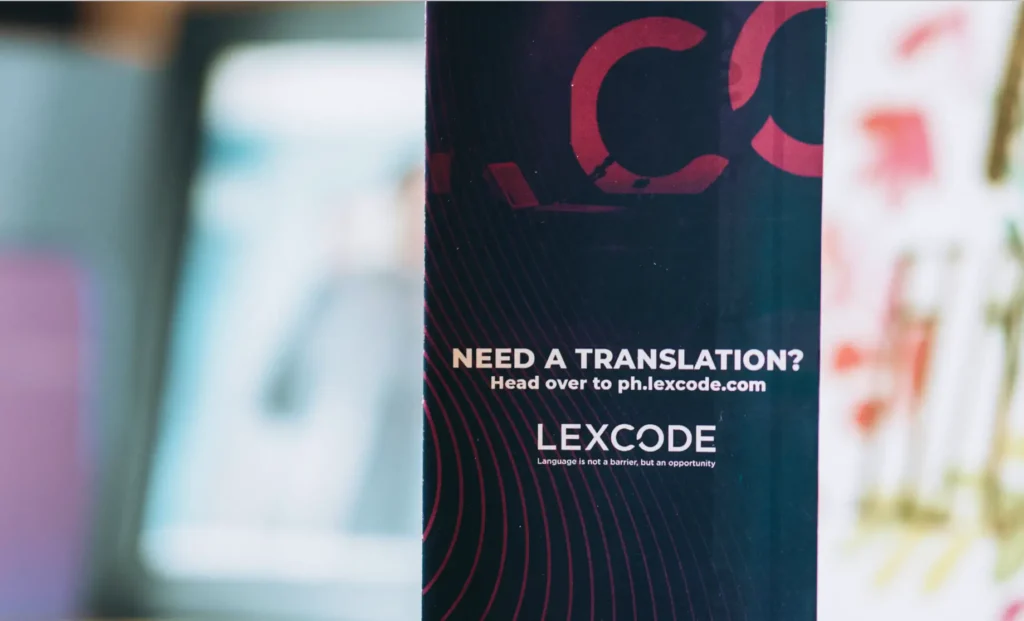
Working in Lexcode’s “frontlines” for five years or so, I’ve had the privilege of overseeing hundreds of translation projects across diverse industries and language pairs as a project manager. What continues to strike me is how the success of these projects so often hinges on one critical factor.
Consider our largest and most frequent demographic: clients seeking to translate personal documents for various international applications, such as immigration, education, or employment abroad. Even a minor error—whether it’s a single incorrect number or a misspelling—can result in the rejection of their document.
Over the past few months, I’ve also been managing the translation of a user manual for a well-known brand’s latest kitchen appliance. Beyond the instructions on how to use the device, numerous safety hazards and warning labels were also included. A single mistranslation could cause a regulatory rejection or, worse, a potentially life-threatening accident to users.
Based on these two examples, it’s clear what I’m referring to: accuracy. Translation is not merely about converting words from one language to another—it’s about preserving meaning, intent, and impact across linguistic and cultural boundaries. In the era of global connectivity and as AI tools continue to evolve, the quality of translation increasingly becomes a competitive differentiator.
Lexcode offers a comprehensive range of translation services to meet the diverse needs of both individuals and global businesses. Our core services include document and certified translation (for legal and government-issued certificates), website and software localization (for websites and user interfaces), marketing translation (for promotional materials and PR content), and multimedia translation (covering subtitling, voice-over, and other similar services).
In the constantly evolving localization industry, our hybrid approach—combining AI-powered translation tools with human expertise—ensures we stay at the forefront of the latest technological advancements. While many localization service providers offer either machine or human translation, we’ve found that the most accurate results come from leveraging both—using advanced AI with the help of AI Language Quality Engineers to create initial drafts, and Processing Specialists or specialized human translators to refine, contextualize, and culturally adapt the content.
I must admit, around this time last year, I was initially skeptical about completely integrating AI into our workflow. Lexcode, having operated for several years as a traditional translation agency—and as a translator myself—I was worried about possible compromise in quality. However, I quickly realized that our technology doesn’t replace human expertise; it enhances it. We now spend less time on repetitive elements and more time perfecting nuanced messaging, resulting in faster deliveries without sacrificing quality.
As a Lexcodian, I take pride in being part of a team that understands both the science and art of translation. Behind every project is our collective commitment to quality and client success.

In my conversations with numerous clients, no matter their industry or requirement, certain questions arise consistently. Here are the answers you’re likely seeking.
Lexcode accepts virtually all document formats, including Word, Excel, PowerPoint, InDesign, XLIFF, and more. For uneditable formats such as PDFs and images (JPG, PNG, etc.), don’t worry—our team of Formatting Specialists is here to prep and process your files. If you’re working with a specialized format, reach out—we’ve yet to come across a file type we can’t handle with some preparation.
Our translation pricing typically follows a per-word model, with rates varying based on language pair, technical difficulty, and additional services required. For instance, translating from English to Czech generally costs less than English to Japanese, while legal or medical content commands higher rates than general conversations because of the specialized knowledge required. We also offer fixed rates on certain Philippine government documents, such as NBI Clearance, PSA Certificates, Apostille, and the like. Visit our page here to know more!
For short requirements with a couple of pages and noncomplex formatting, our general rule of thumb is around 1–3 business days. However, this can vary based on technical difficulty. From experience, I always advise clients to integrate the translation phase into their project timelines rather than treating it as an afterthought—a lesson learned from receiving too many frantic last-minute translation requests that eventually result in delayed product launches or promotional releases.
We create client- and industry-specific terminology databases and glossaries that capture the best translations for key terms, ensuring consistency across all content. For new clients in specialized fields, we often recommend they send their own glossary or approve the one we created. We can also begin with a terminology alignment session where we work together to establish these key terms before full-scale translation begins.
Every translation goes through a three-step quality process: initial translation, editing/proofreading by a linguist, and final quality check. If required, we can provide quality assurance reports from tools like Xbench. For projects in local languages such as Filipino or Cebuano, we can also offer a translation consultation and review.
One misconception I frequently encounter is that machine or AI translation is “good enough” for internal content, and as such, some businesses forgo professional translation services. While this may be true for basic, casual conversations, any material used in a professional capacity should still undergo a review, at the very least. One of our clients once solely relied on AI translation—without postediting or review—for releasing policy changes within the company, only to later discover that critical information had been omitted. Accuracy matters, no matter who your audience is—a lesson thankfully learned before causing any real harm.

Why do we need to obsess over specialized terminologies and rigorous quality assurance processes? Well, the consequences of translation errors extend far beyond simple miscommunication or awkward blunders.
Legal Consequences: Mistranslations in policies or contracts can lead to unintended obligations or even invalidate agreements. This risk applies not only to our clients but also to us. Lexcode not only represents its linguists and translators on paper but also in court. Throughout my career as a translation project manager, I’ve had the opportunity to testify in court, affirming the accuracy, truthfulness, and impartiality of our translations.
Financial Impact: Marketing mistranslations can damage brand perception or render campaigns ineffective. As the linguistic quality reviewer for the promotional materials of a luxury watch brand, I encountered a situation where we had to flag a client’s in-house translator. The quality of their work was subpar and posed a risk to the brand’s image within its target demographic, which may lead to significant financial loss in that region.
Safety Risks: Technical and medical translations require absolute precision. One of my previous projects involved emergency response protocols for a hotel chain, where clear, accurate instructions in multiple languages could literally save lives during a crisis.
Regulatory Compliance: Many industries have strict requirements for multilingual documentation. In one such case, we assisted one of our long-standing clients in the pharmaceutical sector, helping them meticulously translate their product packaging while adhering to the specific regulatory terminology and design requirements of their target country.
Ruined Livelihood: Errors in critical application documents can jeopardize careers and livelihoods. For an aspiring immigrant or Overseas Filipino Worker (OFW), this can lead to delays and even the rejection of the application at a critical moment. For many OFWs, such setbacks can have severe financial and personal consequences, delaying their ability to secure work and support their families.
In translation, red flags to watch out for include awkward phrasing, inconsistent terminology, or content that seems to miss the point of the original. However, be careful not to mistake proper localization for translation errors. Sometimes, differences are intentional adaptations to make content more relevant to the target audience.
Translation appears deceptively simple on the surface—a mere exchange of words between languages. However, beneath this seemingly straightforward process lies a labyrinth of linguistic complexity that demands precision, cultural insight, and profound understanding.
Cutting corners in translation is like performing brain surgery with a butter knife—seemingly possible but catastrophically misguided. A single misplaced word can transform a message of compassion into one of offense, a technical instruction into a potential safety hazard, or a diplomatic overture into an international incident. Check here to see how it can be both an oppurtunity and a bararier.
Accuracy is not just about literal meaning. It’s about capturing the soul of communication. The devil, as they say, is always in the details. And in translation, those details, down to a single word, have the power to alter entire worlds.
How about the promises and pitfalls of AI translations? Read this article here.